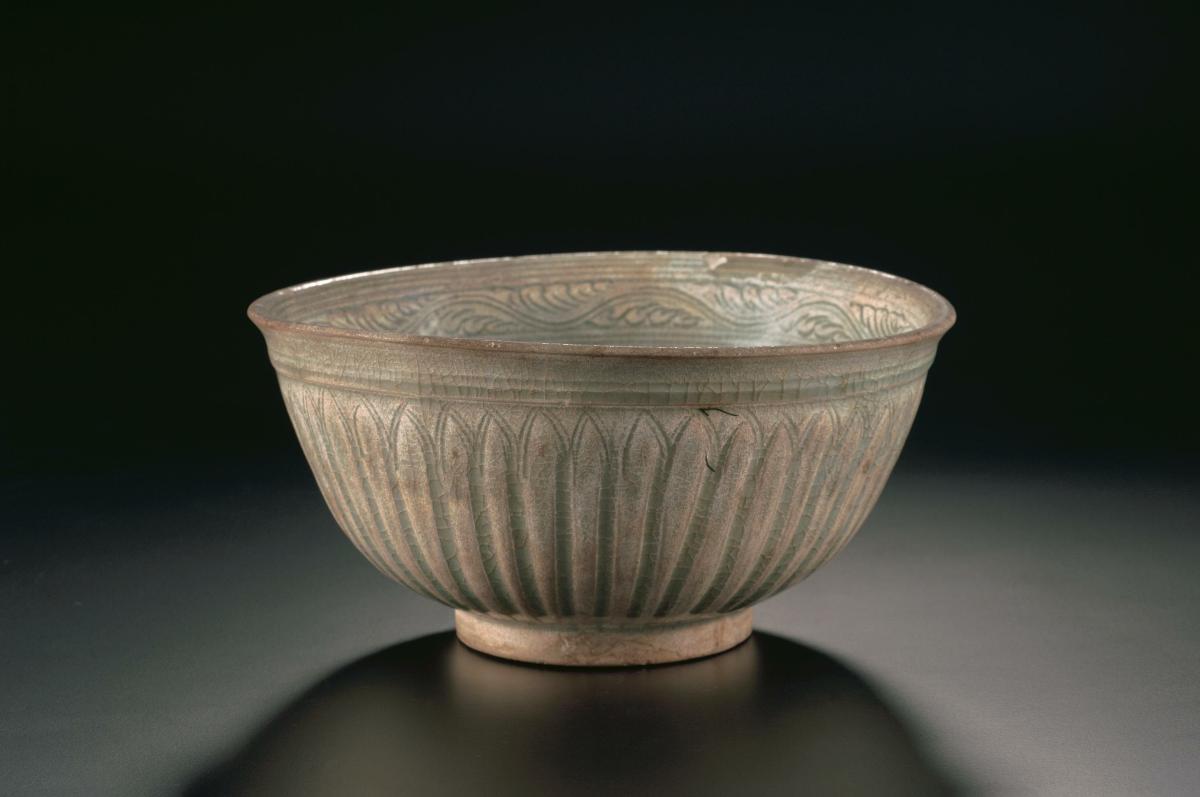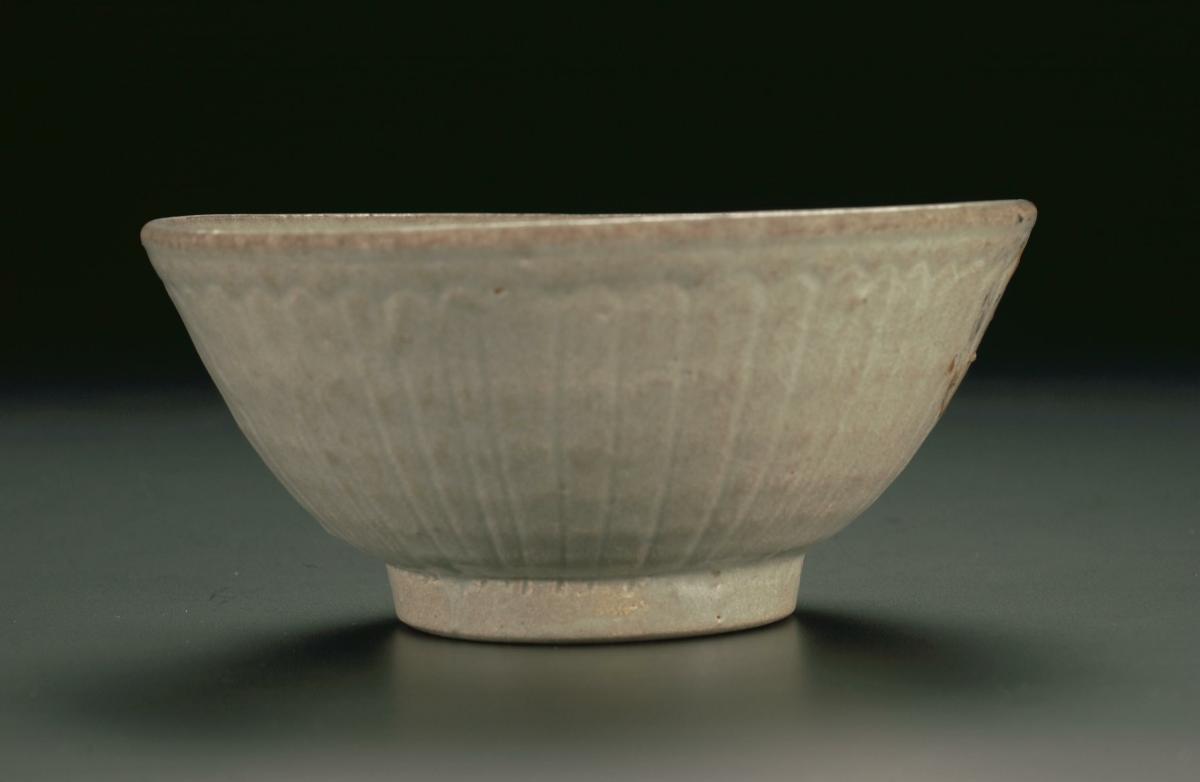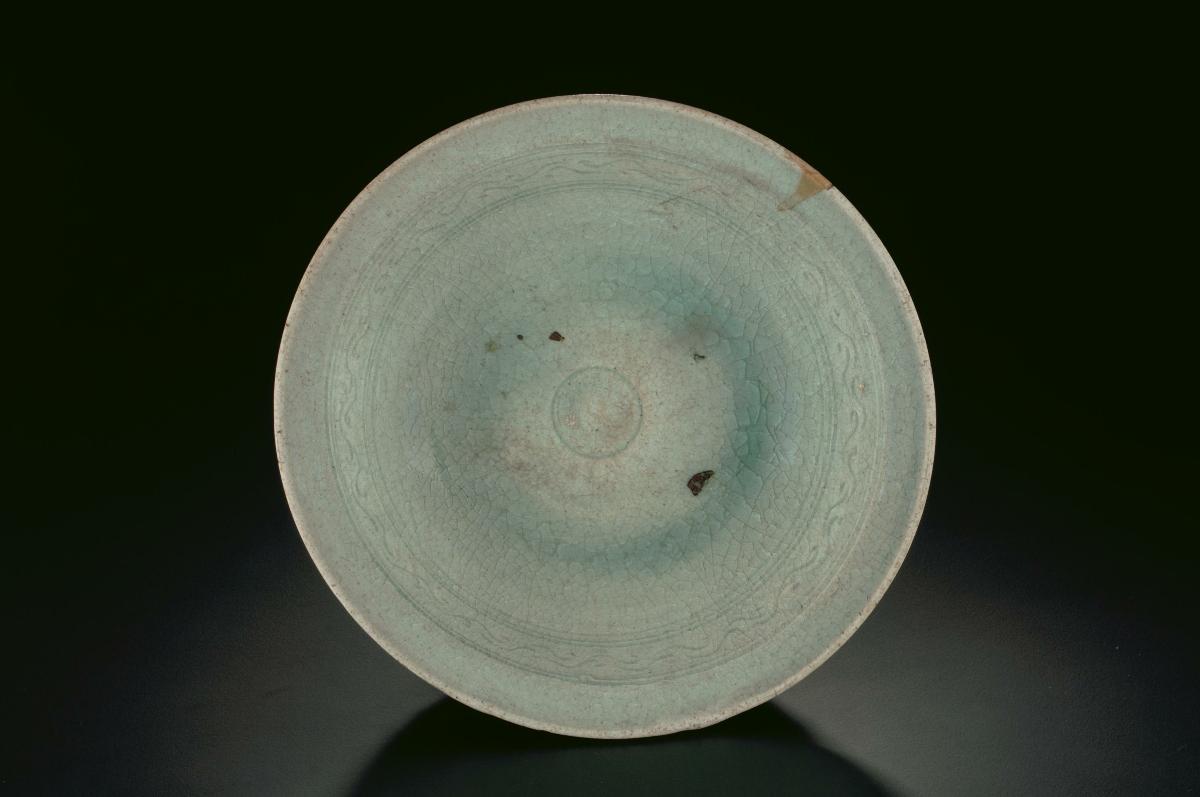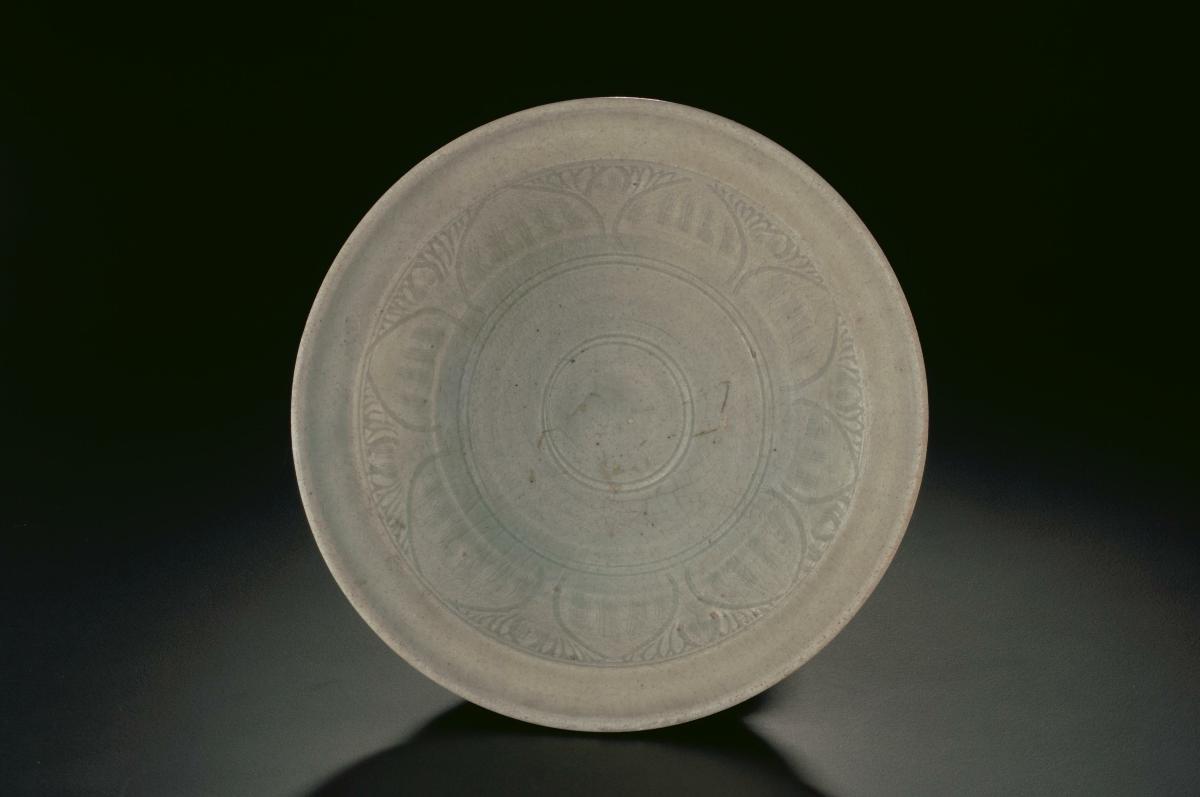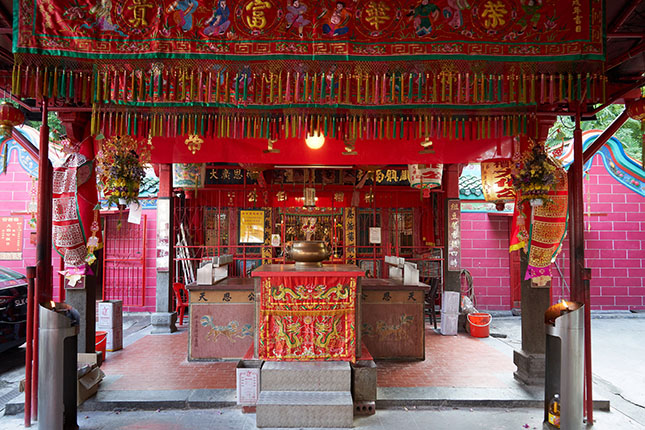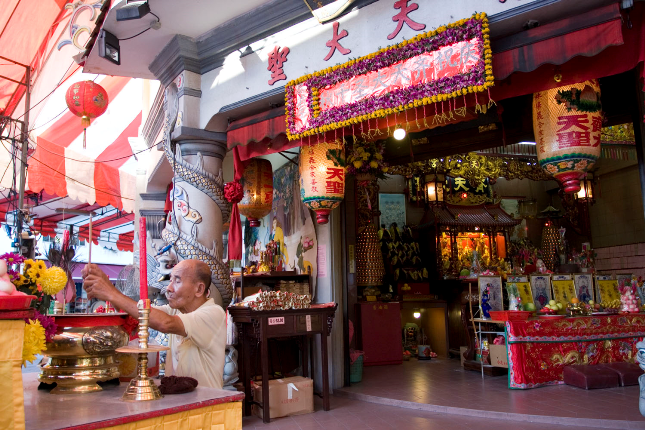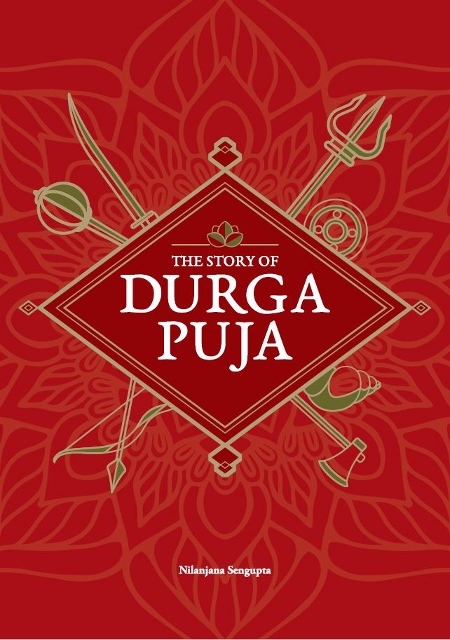This stoneware bowl has gently sloping walls and an everted rim. The body is incised with hand-carved lotus petals and covered in a greyish-green celadon glaze.Greenware was one of the main products of the Sawankhalok kilns. It was very similar to Chinese celadons of the Longquan kilns in Zhejiang province.Celadon is a French term taken from the character of a shepherd in a 17th century play, who wore a green costume.The term refers to green-glazed wares, where naturally occurring iron oxide reacts to the lack of oxygen during firing in the glaze by turning green. Green-glazed wares in Thailand were probably introduced from China during the early 14th century.The royal cities of Sukhothai and Si Satchanalai in north-central Thailand were at the heart of one of the largest ceramic-producing centres in Southeast Asia during the 14th century. Si Satchanalai, which was later renamed Sawankhalok, came to refer to ceramics that originated from either of these two areas.




